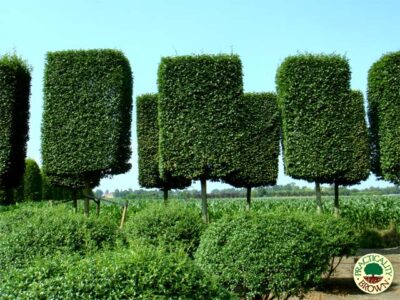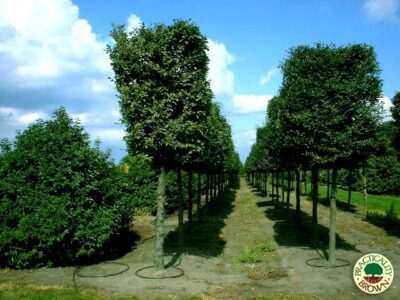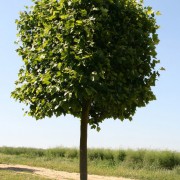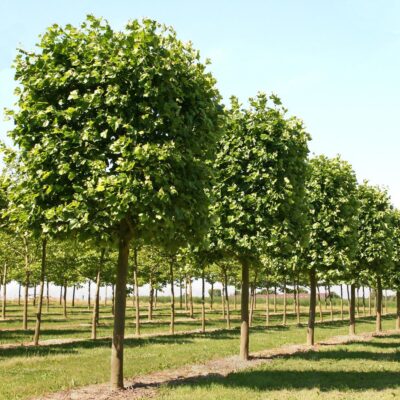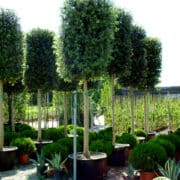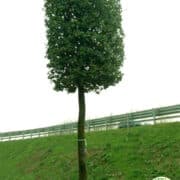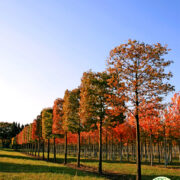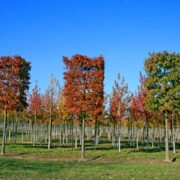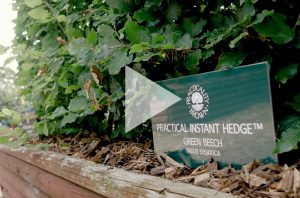Box Head Trees
Box Head trees are designer cubed trees, created by training trees onto a framework over a number of years to create distinctive formal, geometric shapes. They can be used as a specimen to complement your garden, or in pairs to line a pathway , for example. We can supply a number of these trees with clear stems of between 1.5m to 2.5m high and a stem girth of 18cm plus.
Fine Examples of Box Head Trees:
1.Carpinus betulus / Hornbeam
Hornbeam reacts very well to regular pruning and is used to create many shapes including for Box Head trees. These trees grow well in most soils, making it a useful plant for when you have poorer conditions. It has green leaves with a distinctive corrugated surface, which turn a golden-yellow in autumn and tend to remain on the tree all winter before falling. Carpinus betulus has proved itself to be a very hardy, versatile tree.
2. Platanus acerifolia / London Plane
The London Plane is a tough tree has large leaves, starting green in the spring and turning to golden brown in autumn. It has peeling bark that reveals a patchwork of green, white and cream as it matures, making it a striking feature. Long-lived an hardy, it will thrive in most soils.
3.Quercus ilex / Holm or Evergreen Oak
This Oak tree reacts very well to regular pruning and is used to create many shapes and being evergreen makes this tree a popular choice. Leaves are leathery, shiny green and sharply serrated like the holly but older specimens often have a smooth edge. Plant Quercus ilex in any well-drained soil, sun to shade. Doesn’t like extreme cold and is best in temperate areas, especially on the coast.
4.Quercus palustris / Pin Oak or Swamp Oak (eastern North America)
The Pin Oak is a large deciduous tree with delicate leaves. In the autumn time, the brilliant lime green turns a beautiful range of scarlet. Quercus palustris is relatively tough, withstanding a range of soil conditions, including some limited exposure to water logging, though best on free draining, slightly acidic soil.
5.Tilia cordata / Small-leaved Lime or European Linden (central Europe)
These Small-leaved Lime deciduous trees have heart-shaped leaves, pale green on top, bluish underneath turning yellow to deep golden-yellow in the autumn. Tilia Cordata’s regenerate well after pruning, making them an idea Box Head Tree. Position in sun to semi-shade in all soil types. Tolerates heat, likes warmth, frost hardy and wind resistant.

